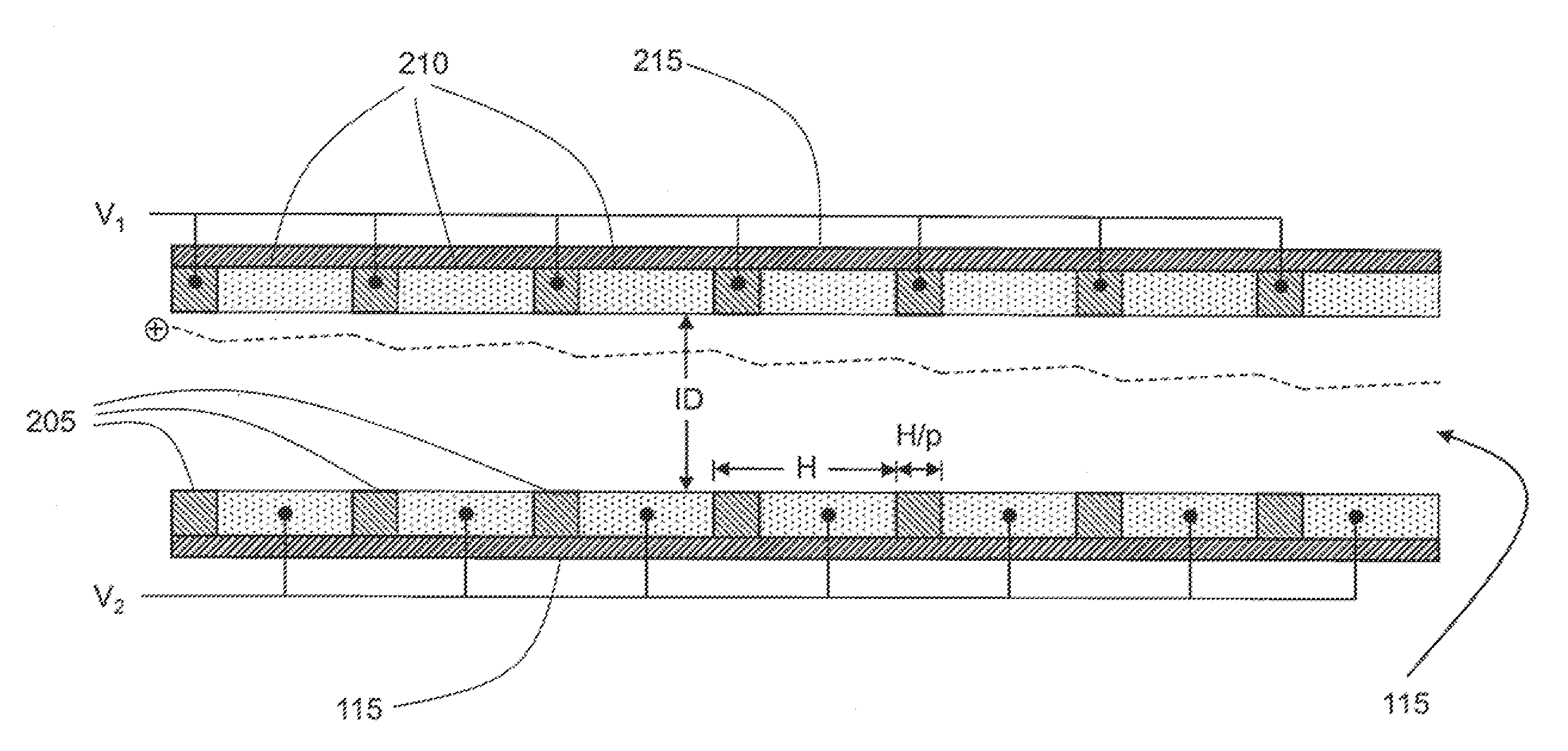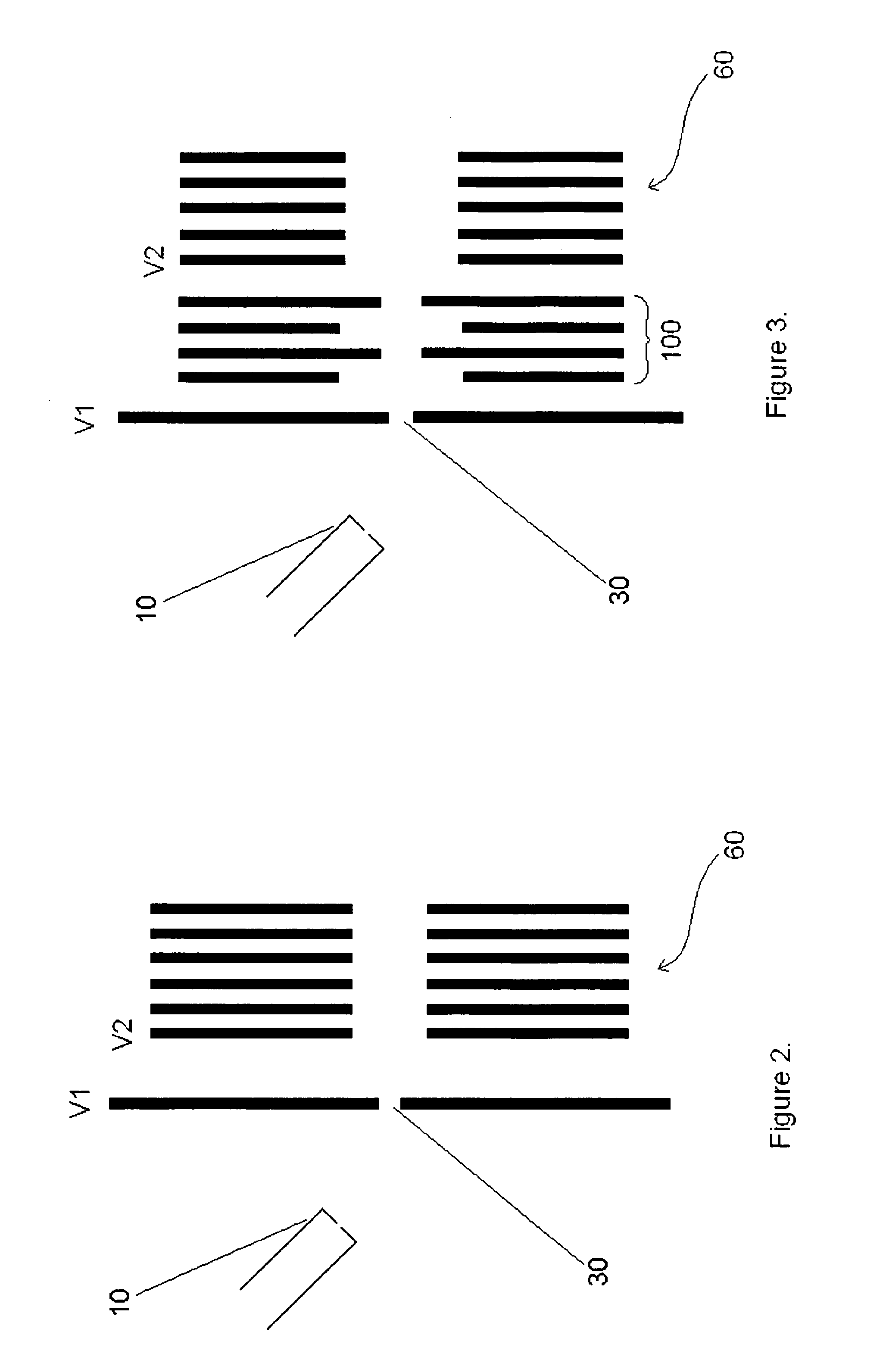Ion transfer tube with spatially alternating DC fields
a technology of ion transfer tubes and dc fields, applied in the field of ion transfer arrangements, can solve the problems of reducing the number of ions delivered to the mass analyzer, reducing the number of ions generated by the ion source, and significant loss in the existing ion transfer arrangements
- Summary
- Abstract
- Description
- Claims
- Application Information
AI Technical Summary
Benefits of technology
Problems solved by technology
Method used
Image
Examples
Embodiment Construction
[0036]FIG. 1 shows an ion transfer arrangement embodying various aspects of the present invention, for carrying ions between an atmospheric pressure ion source (e.g. electrospray) and the high vacuum of a subsequent vacuum chamber in which one or more stages of mass spectrometry are situated. In FIG. 1, an ion source 10 such as (but not limited to) an electrospray source, atmospheric pressure chemical ionization (APCI) or atmospheric pressure photoionization (APPI) source is situated at atmospheric pressure. This produces ions in well known manner, and the ions enter an ion transfer arrangement (indicated generally at reference numeral 20) via entrance aperture 30. Ions then pass through a first pumped transport chamber 40 (hereinafter referred to as an expansion chamber 40) and on into a second vacuum chamber 50 containing an ion conduit 60. Ions exit the conduit 60 and pass through an exit aperture 70 of the ion transfer arrangement where they enter (via a series of ion lenses—not...
PUM
 Login to View More
Login to View More Abstract
Description
Claims
Application Information
 Login to View More
Login to View More - R&D
- Intellectual Property
- Life Sciences
- Materials
- Tech Scout
- Unparalleled Data Quality
- Higher Quality Content
- 60% Fewer Hallucinations
Browse by: Latest US Patents, China's latest patents, Technical Efficacy Thesaurus, Application Domain, Technology Topic, Popular Technical Reports.
© 2025 PatSnap. All rights reserved.Legal|Privacy policy|Modern Slavery Act Transparency Statement|Sitemap|About US| Contact US: help@patsnap.com



